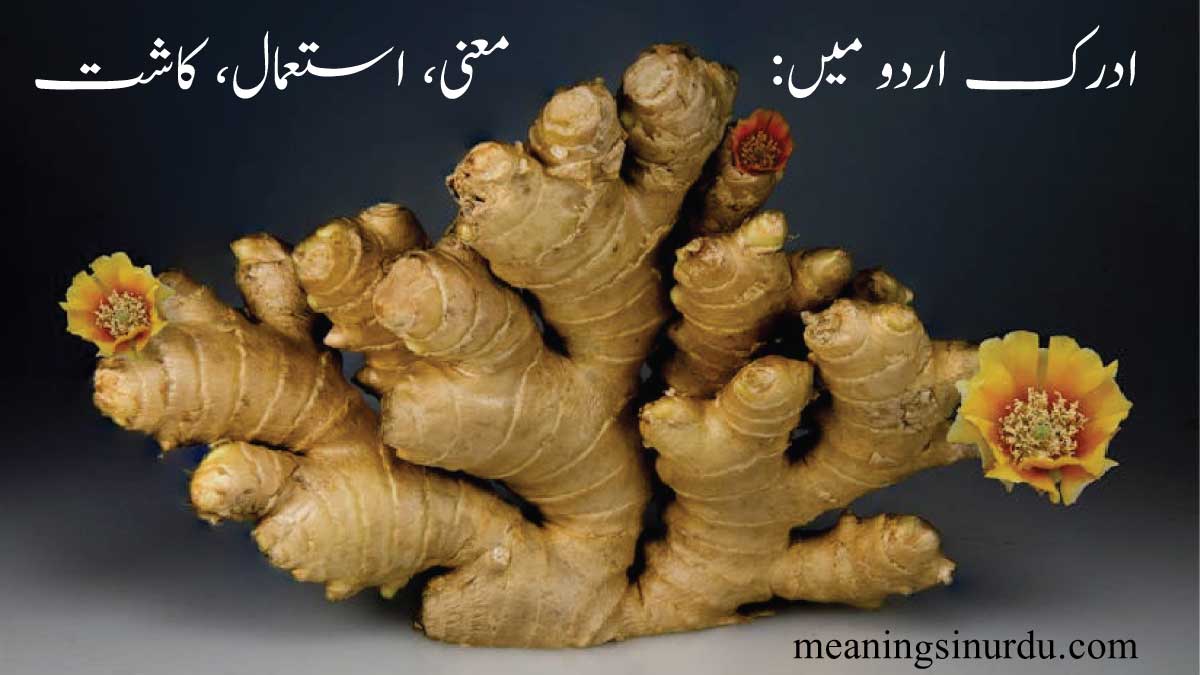In Urdu, Ginger is called ادرک (Adrak). The word Adrak consists of four letters: ا (A), د (D), ر (R), and ک (K). Ginger is commonly used in Urdu-speaking regions for its culinary and medicinal benefits. The root is known for its spicy flavor and health-boosting properties.”
Introduction to Ginger in Urdu
Ginger, known as ادرک (Adrak) in Urdu, is a widely used spice with a long history of culinary and medicinal applications. This aromatic root, native to Southeast Asia, is celebrated for its pungent flavor and numerous health benefits. In Urdu-speaking regions, Adrak is an essential ingredient in many dishes and traditional remedies. Its versatility in the kitchen and its reputation for boosting health make Ginger a staple in both everyday cooking and holistic practices.
What is Ginger in Urdu?
In Urdu, Ginger is referred to as ادرک. This term denotes the root of the Zingiber officinale plant, which is renowned for its distinctive flavor and therapeutic properties. The word Adrak is derived from the Sanskrit word “shringa” and has been used in various cultures for its ability to aid digestion, alleviate nausea, and enhance flavor. Ginger is highly valued in traditional medicine and culinary arts, making it a popular choice in Urdu-speaking households.
Ginger in Different Languages
| Language | Name |
|---|---|
| Urdu | ادرک (Adrak) |
| English | Ginger |
| Hindi | अदरक (Adrak) |
| Arabic | زنجبيل (Zanjabeel) |
| Spanish | Jengibre |
How to Use Ginger in Urdu Cuisine
Ginger is a key ingredient in Urdu cuisine, known for its ability to add depth and warmth to dishes. Here’s how Adrak is used in various recipes:
Masalas (Spices): Adrak is often ground into a paste and used as a base for masalas, adding a spicy and aromatic quality to curries and stews.
Tea (Chai): Fresh slices of Ginger are commonly added to tea (chai) for a spicy kick and to aid digestion. This preparation is especially popular in colder months.
Pickles: Adrak is used in pickles to enhance flavor and add a zesty element. It is often combined with other spices to create a tangy and spicy condiment.
Marinades: Ginger is a key component in marinades for meats, helping to tenderize and infuse flavors into the dish.
Popular Uses of Ginger
| Dish Type | Use of Ginger |
|---|---|
| Curries | Ground or fresh for a spicy, aromatic base |
| Tea (Chai) | Fresh slices or dried ginger for flavor and digestion |
| Pickles | Added for a tangy and spicy flavor |
| Marinades | Used to tenderize and flavor meats |
Growing Ginger at Home (ادرک کو گھر میں اُگانا)
Growing Ginger at home is relatively simple and can be done with a few basic steps:
Climate: Ginger thrives in warm, tropical climates. It requires a temperature range of 70°F to 90°F (21°C to 32°C) and high humidity to grow well.
Soil: The plant prefers rich, well-drained soil with a pH of 5.5 to 6.5. Adding compost or organic matter can improve soil quality.
Planting: Ginger is grown from rhizomes, which are planted in shallow, wide containers or directly in the garden. Ensure the rhizomes are placed horizontally and covered with a thin layer of soil.
Care: Water regularly to keep the soil moist, but avoid waterlogging. Ginger plants require partial shade and should be kept away from direct sunlight. Harvesting typically occurs after 8-10 months when the plant’s leaves begin to yellow.
Explore: Green tea In Urdu
Cultural Importance of Ginger in Urdu Tradition
Ginger, or ادرک, holds significant cultural and medicinal importance in Urdu-speaking regions. In traditional practices, Adrak is used not only as a culinary spice but also for its therapeutic benefits. It is believed to aid in digestion, improve appetite, and relieve symptoms of colds and flu. Ginger is often included in home remedies and traditional medicine, reflecting its role in promoting health and wellness. The use of Adrak in festive dishes and daily meals highlights its integral role in Urdu cuisine and cultural practices.

